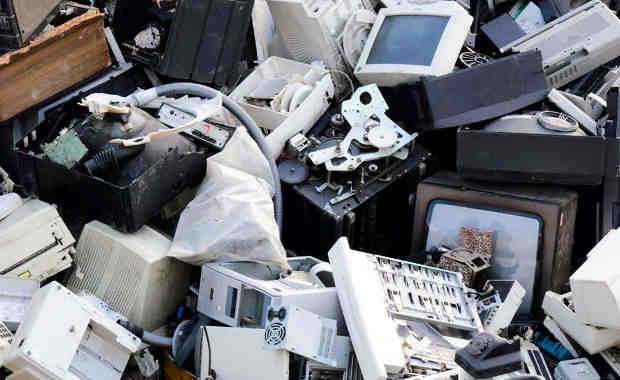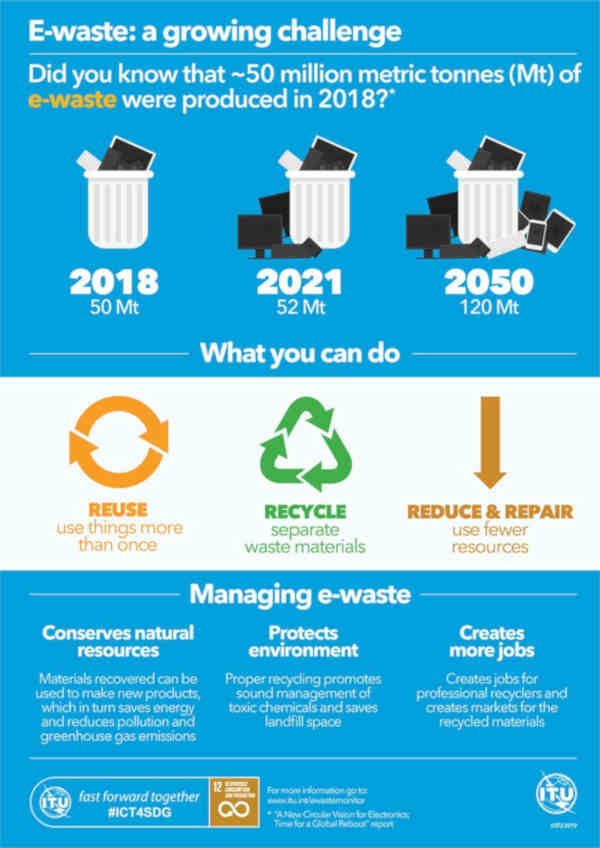How to Manage E-waste to Protect the Environment
The ICT (information and communications technology) sector has an environmental impact, including through the generation of e-waste. E-waste, which refers to used, broken, or obsolete electrical and electronic equipment, such as phones, laptops, sensors, and TVs, can contain hazardous substances that may pose considerable environmental and health risks, especially if treated inadequately.
As technologies change at great speed, and as access to and use of electrical and electronic equipment increases, product lifecycles become shorter and many designs do not support repair or reuse. As a result, the amount of e-waste is growing rapidly throughout the world.
As the UN specialized agency for technology, ITU helps Member States to take advantage of the opportunities of ICTs to address the challenges linked to climate change, and to address the issue of e-waste.
This includes the identification of guidelines, awareness raising and capacity building activities, the implementation of projects, and direct assistance to Member States.
ITU’s Development Bureau (ITU-D) has been given a mandate to “assist developing countries in undertaking proper assessment of the size of e-waste and in initiating pilot projects to achieve environmentally sound management of e-waste through e-waste collection, dismantling, refurbishing and recycling.”
To this end, ITU-D is developing e-waste guidelines to help countries identify best policies. It is also carrying out an electronic waste management project, and recently launched a new partnership to help improve global e-waste statistics.















